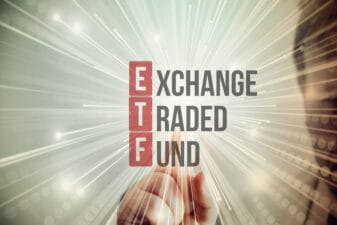There are certain industries that, no matter how bad the underlying economic picture gets, can still be counted on to deliver steady profits.
Take grocery stores as an example. We still need to eat during tough times, and chances are consumers will react to a weak economy by cutting down their restaurant spending. That’s good news for the grocers and is one reason why grocery store shares tend to go up during periods of weakness.
Pipelines are another example. Even during the storm in the energy market over the last six months, shares of the pipelines have been relatively unscathed. That’s because even if overall crude production goes down, pipelines are still in decent shape because most of their capacity is accounted for by mature oil fields. In fact, demand for pipelines has been so strong that there isn’t enough capacity to satisfy it all. Why do you think the crude-by-rail market is booming?
Enbridge Inc. (TSX:ENB)(NYSE:ENB) specifically looks to be an attractive investment. Competitor TransCanada Corporation is struggling to get regulatory approvals for its two big projects, Keystone XL and Energy East, while Enbridge has government approval in place for its new big project, Northern Gateway. Additionally, Enbridge has other smaller projects that are set to come online over the next couple years.
Earnings are expected to grow nicely. The company earned $1.33 per share in 2014, which is expected to grow to $2.28 in 2015, and then to $2.67 in 2016, making a boring company like Enbridge one of the fastest growers on the TSX Composite. And that’s even without Northern Gateway, which is still at least five years away from adding to earnings.
But investors are paying a steep price for that rosy outlook. Enbridge trades at nearly 30 times its projected 2015 earnings, and 24 times its projected 2016 earnings. I don’t care how rosy the outlook is, that’s an expensive stock.
What should investors do? Should they buy shares of Enbridge even though they’re trading close to all-time highs, content to collect the company’s 2.9% consistently rising dividend?
Perhaps, but that doesn’t appeal to this value investor. Instead, I’m looking at a way investors can protect themselves from the potential price decline, all while pocketing a dividend that’s more than 85% higher, with a yield of 5.4%.
Why I prefer the preferred shares
Recently, Enbridge outlined a plan which sees a potential $15 billion in assets transferred to its publicly traded subsidiary, Enbridge Income Fund (TSX:ENF). Since Enbridge owns the majority of the shares of the Income Fund, these transactions will help to ease the burden on the parent’s balance sheet, while still sharing in earnings from the subsidiary.
It’s good news for just about everybody, with one exception—the holders of Enbridge preferred shares.
For preferred shareholders, they’re stuck holding what is essentially debt against the company, but with potentially less assets in the case of a bankruptcy. Based on this news, preferred shares have sold off, while common shares have rallied. Credit ratings agencies have announced they may downgrade Enbridge preferred shares based on this news.
This creates an opportunity. The yield on the Series A (ticker symbol ENB.PR.A) preferred shares has ballooned to 5.4%, which is a generous difference compared with the yield of the common shares. Plus, preferred shares are much more protected if the market decides that Enbridge no longer deserves a 30 times P/E ratio.
Based on a 5% annual raise on the common shares, it would take 13 years for the yield on cost of the common shares to match the preferred shares. And that’s without taking into consideration that’s it isn’t very difficult to reinvest your preferred dividends to create your own growing income stream.
Sure, preferred shares aren’t very exciting, but for investors who are looking for income right now, 5.4% beats 2.9%, even if the latter is growing nicely. With the same company behind both dividends, retirees have to at least consider the preferred shares.








